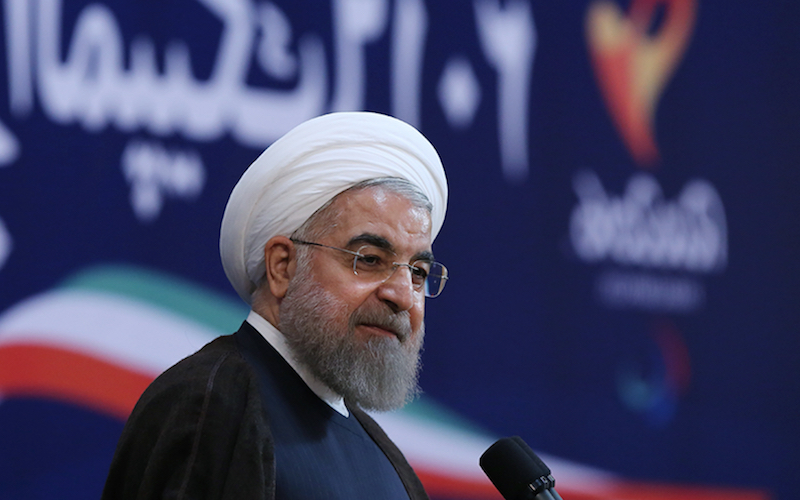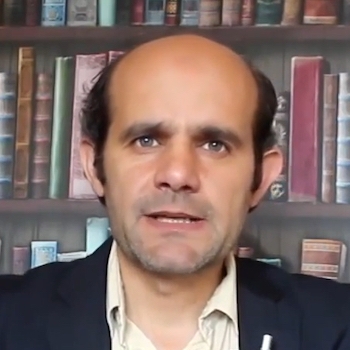
Are you a Sunni or a Shia? It Does Matter for the U.S.
Arabs always say that words erupt into wars. However, an exception to this proverb is the relationship between the United States and Iran. The mutually provocative words that have been exchanged between the two countries over the last thirty-seven years have resulted in an open agreement, not an open war.
Despite the alliance between the United States and the ruling Sunni elites, America’s wars in the Muslim world both in the pre and post the 9/11 era have tended to be against the Sunni population and Sunni rejectionist movements.
What an irony! Decades of propaganda portrayed Iran as an enemy, but the United States never targeted Iran directly nor its proxies. In fact, the United States used Iranian disciples from the Iraqi opposition to govern Iraq after overthrowing Saddam Hussein’s regime. Many Iraqi Ayatollahs rode the American tanks on the way to Baghdad in 2003. Moreover, the United States fabricated the demographic structure in Iraq in the Shia’s favor in order to facilitate their complete takeover of the country. To put the rise of the Shia into context, it was Sunni Muslims and not Shias who were tortured by US occupying forces in the Bagram and Abu Ghraib.
The United States allowed Iranian rather Turkish influence in Iraq during and after the invasion of 2003 which resulted in the rise of many Jihadist movements, most prominently ISIS which was a reaction to the vicious sectarian warfare within Iraq engineered and perpetrated by Iran and its proxies. The United States’ policy with regards to the Shia is far more flexible than that towards the Sunnis. In fact, the United States trusts the Shia, but fights and kills the Sunnis. Moreover, the United States endorsed the Shia militias, but considers the Sunni militias as terrorists unless they fight the Jihadists.
Today, General Qasem Soleimani, the prominent Iranian officer, is currently leading the coalition’s military campaign in Iraq against ISIS. Soleimani is also leading some Syrian military campaigns supporting the Assad regime against the opposition.
I think Shiism and its hierarchy have always been consistent with American interests. In Iraq, the United States supported Shiism and its enmity towards the Sunnis in order to fight the Jihadists and the Sunni resistance fighters. On the other hand, through its channels of communications with the Shia hierarchy, the United States was able to construct a deal with the Ayatollahs.
Khomeini, ironically, arrived in Tehran in 1979 on a French aircraft, declared an Islamic Revolution in the country, and transformed it into a Shia State. Thus, Iran became the only global Shia power which attracted the allegiance of the majority of Shia around the world, mainly in the Middle East. However, the Sunnis in Iran were and still are denied their rights and suffer continuous persecution. The differences between the Sunnis and the Shia sect were politicized and the old-new religious argument between them was revived in the region threatening the unity and the social cohesion within the Arab and wider Muslim world.
In other words, Khomeini’s revolution dissolved the social and political borders between the Muslim countries. Hezbollah, for instance, denied being a part of the state in Lebanon, but rather considers itself as part of the Shia State led by Guardianship of the Islamic Jurist, Wilayat al-Faqih who was represented by Khomeini and then by his successor Khamenei.
Politically, Iran galvanized the Shias and they became Iran’s proxies and they act like a Trojan horse for Iranian national Interests in the region. Therefore, Iran’s influence and its role in the Middle East expanded after the Khomeini Revolution. The social dimension of the revolution enabled Iran to penetrate Islamic societies, and revive their divisions, hence, reigniting infighting. The western position towards establishing a Shia state was flexible and tolerant in comparison to western interventionist policy regarding continuous Sunni attempts to establish their own state.
Political Islam is not tolerated anywhere in the world unless it has a Shia flavor. In Algeria, the Islamic Front was denied power after winning elections in 1991 and the country was plunged into violence and bloodshed for years. Similarly, in Egypt, the United States stood by the military coup against the elected Islamist president, Mohammed Morsi. In fact, the United States never showed any support for Mohammed Morsi as the first elected president in the Arab world for decades.
Today, America’s direct or indirect intervention in Syria is clearly on the side of the Shia. While the drones and the US fighter jets target Sunni rejectionist leaders and civilians in Syria, Iraq, Afghanistan, and Yemen, the Shia leaders and Shia militias have complete freedom of movement in the region. Moreover, the United States relies on the Iranian generals and their Iraqi proxies in the major battles against ISIS and other Sunni groups in Syria and Iraq. Hence, the United States is willing to further strengthen the Shia presence and control in the Arab region at the expense of the Sunni majority.
Finally, any observer can conclude that there are two types of wars in the Middle East that the United States is embroiled in; the war of rhetoric against Iran and the Shias and an operational fierce war against the Sunni population, but not the Sunni regimes. The ongoing battle to recapture Mosul is proof of the alliance between the United States and Shias who are controlled by Iran. In other words, Iran is the key tool for the United States’ interests in the region.
